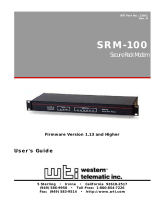
iv
Chapter 2 SRM and AlphaBIOS Consoles
2.1 Invoking the SRM Console.................................................................... 2-2
2.2 Commands ............................................................................................ 2-3
2.2.1 Command Summary....................................................................... 2-3
2.2.2 Commands: Syntax........................................................................ 2-5
2.2.3 Commands: Special Keystrokes and Characters........................... 2-6
2.3 Show Commands................................................................................... 2-8
2.3.1 Show Config.................................................................................... 2-8
2.3.2 Show Device.................................................................................. 2-10
2.3.3 Show Memory ............................................................................... 2-13
2.3.4 Show PAL ..................................................................................... 2-13
2.3.5 Show Power .................................................................................. 2-14
2.3.6 Show Version................................................................................ 2-15
2.4 Creating a Power-Up Script................................................................ 2-16
2.5 Booting the Operating System............................................................ 2-18
2.6 Configuring a PCI NVRAM Module.................................................... 2-20
2.7 Testing the System ............................................................................. 2-21
2.8 Set Commands .................................................................................... 2-24
2.8.1 Set Password................................................................................. 2-24
2.8.2 Set Secure ..................................................................................... 2-25
2.9 Secure Mode........................................................................................ 2-26
2.9.1 Login Command and Secure Mode............................................... 2-26
2.9.2 Clear Password............................................................................. 2-27
2.9.3 Resetting the Password ................................................................ 2-28
2.10 Stopping and Starting CPU ................................................................ 2-29
2.11 Updating Firmware ............................................................................ 2-29
2.12 Forcing a System Crash Dump........................................................... 2-31
2.13 Using Environment Variables ............................................................ 2-32
2.13.1 set envar........................................................................................ 2-32
2.13.2 show envar.................................................................................... 2-33
2.14 Depositing and Examining Data......................................................... 2-34
2.15 Reading a File..................................................................................... 2-37
2.16 Initializing the System........................................................................ 2-38
2.17 Finding Help ....................................................................................... 2-39
2.18 Environment Variable Summary........................................................ 2-40
2.18.1 auto_action.................................................................................... 2-42
2.18.2 bootdef_dev ................................................................................... 2-42
2.18.3 boot_osflags................................................................................... 2-43
2.18.4 com1_baud .................................................................................... 2-45
2.18.5 com1_mode.................................................................................... 2-45
2.18.6 console........................................................................................... 2-46





















